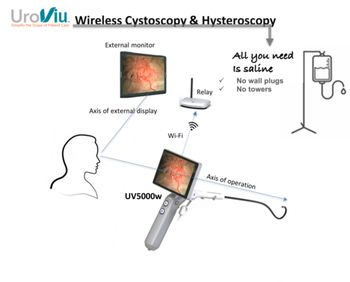
- Vol. 95 No 07
- Volume 95
- Issue 07
Healthcare is going gangbusters for the economy
The economy is going gangbusters. According to an American Medical Association report, that's due in part to the healthcare industry.
The DOW is up. Unemployment is at an all-time low.
Most people wouldn’t expect healthcare’s economic impact to be that great, says Richard C. Johnston, MD, FACP, chief executive officer and chief physician officer at USMD Healthcare in Dallas. Johnston says a busy internist might account for $1 to $1.3 million dollars to a hospital’s revenues and some specialties, like orthopedics, are way higher. “But to actually think about the number of employees, payroll, taxes and other downstream revenue, this is the first time we’ve seen that presented,” says Johnston.
POPULAR ON OUR SITE:
The study broke down the data by region and measured the overall economic impact of physicians by four qualifiers:
· The number of jobs the average physician supports: 17.1
· Total economic output per physician: $3.2 million
· Dollar amount contributed to workers per physician: $1.4 million
· Tax revenue per physician: $129,000
Johnston says the numbers first reflect how much healthcare means to the economy, and how cautious we must be when making dramatic changes in anything that affects healthcare economics. Also,
The Future of Healthcare
“In terms of the future of the industry, there’s clearly a primary care shortage in the country, maybe 50, 000,” says Johnston. “Right now because of full employment in the country, just like in the 90s when the economy is really roaring, a lot of people who would migrate into healthcare because there are always jobs there, go out and get jobs in industry, so we are struggling to keep up with turnover.”
As the population ages, that too will strain the system in terms of primary care, geriatric providers, nursing home workers and home health aide shortages. Who will be willing to work those positions, what will the pay and benefits be?
The report also pointed out that doctors generate more economic output, produce more jobs and pay more in wages and benefits than many other professionals, including those working in higher education, legal services and home health.
The Good, Bad and Ugly
“You can say we [the U.S.] are the best in terms of healthcare research and technical point of view, but from efficiency and cost of delivery we’re one of the worst as far as the wealthy countries,” says Kate Tulenko, MD, CEO of Corvus Health, a global health workforce firm, and a practicing pediatrician, in Virginia.
RELATED:
Tulenko points out that it may cost $5,000 to do a hip replacement in Spain, and $50,000 in the U.S. “Part of that is for every physician, it takes like seven billers and coders to do the billing and insurance paperwork.” “It’s feeding a bureaucracy.”
If we want to see growth and growth in healthcare, we want to see people actually delivering care, Tulenko notes. Currently the U.S. spends 17 percent of GDP on healthcare, she says, so if say, 20 percent [an example figure] of that goes to administration, imagine instead, if it were redirected to care.
Rather than a proliferation of billers and coders, people were physical therapists, nurses and medical care workers. “There is no doubt, despite what some people tell you, that there is an unmet healthcare need in the U.S., says Tulenko. “Not everyone in the United States who needs healthcare is getting it.”
“You do need people reviewing insurance claims, no doubt about that, to prevent fraud, and you also need data to do analysis and learn things from, but it’s gotten out of control in the U.S.,” Tulenko says.
Johnston says we have a crazy cost structure in healthcare where even in this country a hip replacement can cost all-in $10,000-12,000 in one place and $70,000 at another. “It’s stuff like that that makes no sense.” In the pharmaceutical industry, he says, where one drug in a class can cost $500 a month and a generic can cost $40 a month, or where cancer drugs starts at $100,000 per year-“we can’t keep doing that.”
IN CASE YOU MISSED IT:
Both Johnston and Tulenko agree the healthcare industry will experience continued growth, but that shortage on primary care physicians, and senior care specialties will likely continue.
“Healthcare will still be the largest employer because the population is aging and you’ll need more assets, but more will have to be directed into appropriate settings, and for example, maybe fifty percent of surgeries done in hospitals should be done in an ambulatory surgery center and a lot of the procedures done in an ambulatory surgery center should be done in an office setting, so that sort of stuff is going to have change,” says Johnston.
Articles in this issue
over 7 years ago
Telehealth as a competitive edge, not a competitor's advantageover 7 years ago
Improve your claim denial managementover 7 years ago
Telemedicine licensure and related challenges for physiciansover 7 years ago
How to select the right telemedicine vendorover 7 years ago
How physicians can stretch their college dollarsNewsletter
Stay informed and empowered with Medical Economics enewsletter, delivering expert insights, financial strategies, practice management tips and technology trends — tailored for today’s physicians.



















